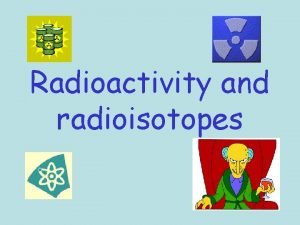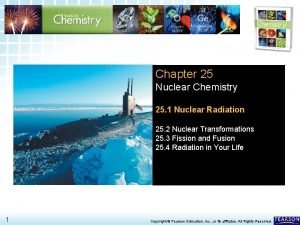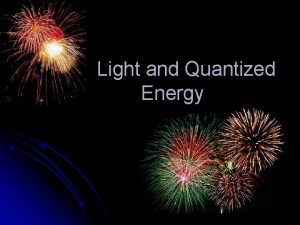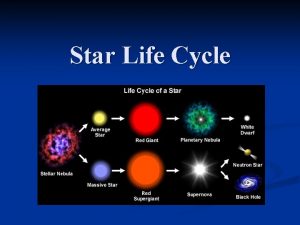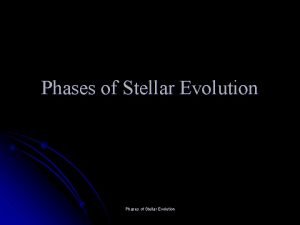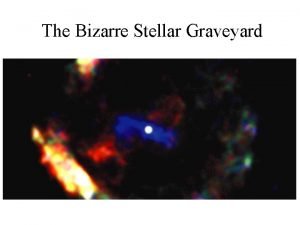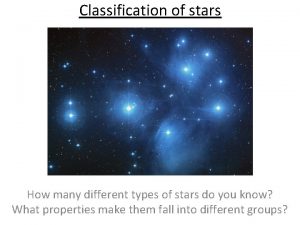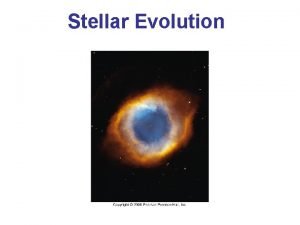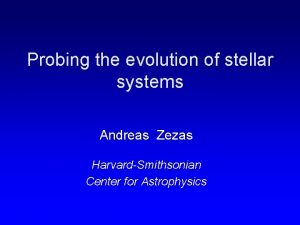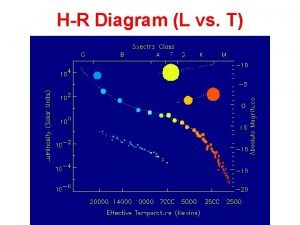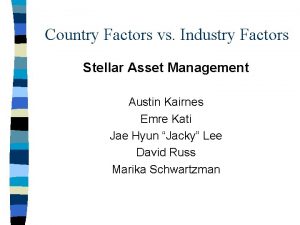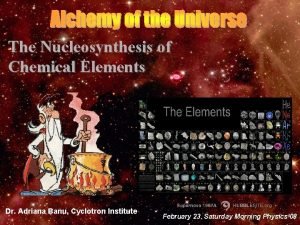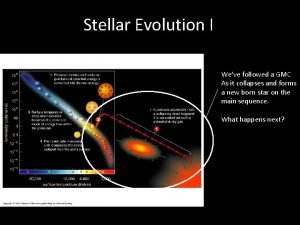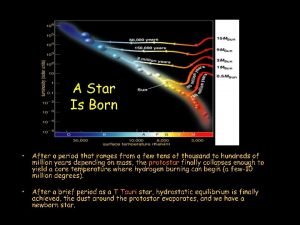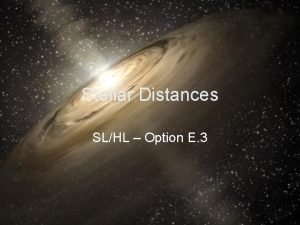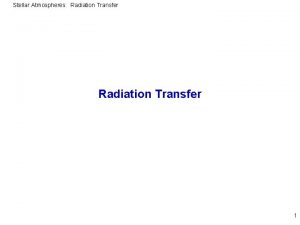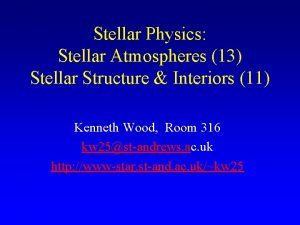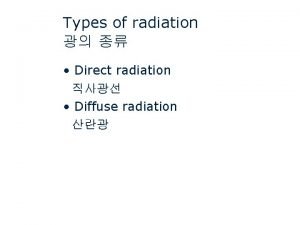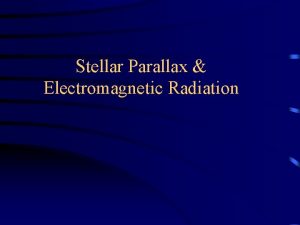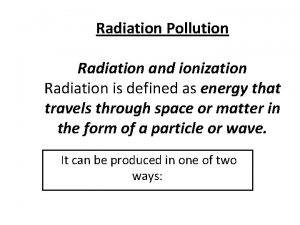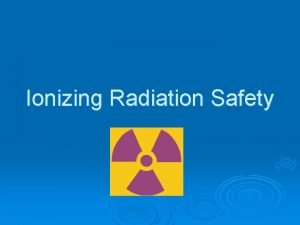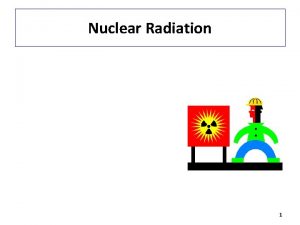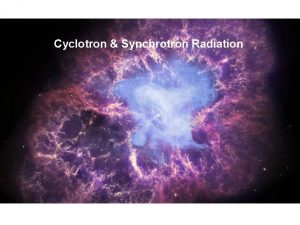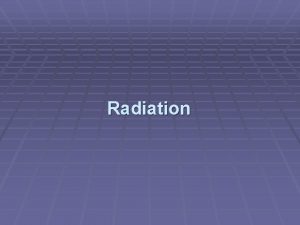Stellar Radiation and Stellar Types SLHL Option E


























- Slides: 26

Stellar Radiation and Stellar Types SL/HL – Option E. 2

Nuclear Fusion in Stars • As we will see in a future unit, the combination of two lighter elements to form a heavier element causes a liberation of energy • In stars, we see the conversion of hydrogens into helium. • Fusion requires extremely high temperatures on the order of 107 K

Fusion • As interstellar dust coalesces due to mutual gravitation, a sufficient enough mass may be reached to produce the gravitational force that will net the heat required for fusion • Failure to achieve critical mass, which is 80% the mass of our Sun, results not in fusion but instead in a hydrogen-rich object called a brown dwarf.

Balance is Key • The fusion will produce radiation, gamma photons and neutrinos, that will in turn collide with surrounding protons and electrons, thus transferring energy. • This radiation pressure acts to stabilize the Sun against gravitational collapse, creating a kind of equilibrium.

Luminosity • The energy radiated by a star is emitted uniformly in all directions, just as we would see with a light bulb • The total energy emitted by the star per unit time (i. e. the power) is called the Luminosity of the star, L • Our Sun has a luminosity of 3. 90 x 1026 W

Luminosity • We can measure brightness (with a CCD) and determine distance to learn to Luminosity of a star. (as you will see) • L is based on radius of a star and temperature of the star. – If r is equal, then higher temp = higher L – If temp is equal, then higher r = higher L

Apparent Brightness • By the time the energy released by a star arrives at Earth it will be spread out over a sphere of radius d. The energy received per unit time per unit area at the Earth is called the apparent brightness, b

Brightness, Apparently

Apparent Brightness Formula • Assuming two stars of equal L, the closer star has a greater brightness • We would have to know the L of a star and its brightness to determine distance, but since all stars are not equally bright or luminous, we cannot use the formula in that way.

The Stefan-Boltzmann Law • Allows for a comparison of the Luminosities of different stars – R is the radius of the Star – T is the surface temperature of the star – σ (lower-case sigma) is the Stefan-Boltzmann Constant = 5. 67 x 10 -8 Wm-2 K-4

Wien’s Law • Also known as the Displacement Law • Wien discovered an empirical relationship between the maximum value of the wavelength emitted by a black body and its temperature which can be stated as:

Wien’s Law • This law applies to the spectra of stars as well, which means that we can use Wien’s Law to find the temperature of a star based on the spectra of radiation that it emits • Given that we can measure find a star’s luminosity as well, we can actually use the S-B Law for the more practical purpose of determining the radius of a star.

Atomic Spectra and You! • Passing a sufficiently high potential through a tube of a specific gas will cause it to glow, as we see in the fluorescent lights in the classroom • Different elements produce different discrete spectra, unlike an incandescent light source which produces a continuous range of colors

Emission/Absorption • If we shine light from an incandescent source through a tube made of a particular gas, only the wavelengths that would be emitted by that gas are absorbed

Absorption Spectra Thus, we can determine the surface elements of a star based on the absorption spectrum that we see when we look at that star

Spectral Classification • Stars with similar spectra are grouped together into spectral classes, which relates directly to their surface temperatures. • Temperature influences a star’s ability to ionize or excite the atoms of its surface elements, thus impacting the spectrum we see • Regardless of class, all stars are essentially 74% H, 25% He, and 1% other

OBAFGKM! Spectral Class Approx. Temp. Range (K) Color Main Absorption Lines Example O 30000 – 50000 Blue violet Ionized Helium Mintaka B 10000 – 30000 Blue white Neutral Helium Rigel A 7500 – 10000 White Hydrogen Sirius A F 6000 – 7500 Yellow white Ionized Metals Canopus G 5000 – 6000 Yellow Ionized Calcium Sun K 3500 – 5000 Orange Neutral metals Aldebaran M 2500 – 3500 Red orange Titanium Oxide Betelgeuse

Types of Stars • Red Giants – very large, cooler temp than our sun • White Dwarfs – much smaller than the sun (earth size) but much hotter

Types of Stars • Neutron stars – have undergone gravitational collapse and are now mostly neutrons at their core • Super (duper) Novas – when a neutron star’s core cannot collapse further, the outer layers get reflected back outward causing a huge shock wave. – The star will tear apart (mostly) and send out a shock wave. This can cause a flash of brightness over 100 x greater than the whole universe!

Types of Stars • Pulsars – rotating neutron stars that emit (generally) radio frequencies. – We can detect these when the pole points at Earth • Black Holes – sufficiently massive to prevent even EM radiation from leaving the surface

Types of Stars • Binary Stars – almost half of the stars we can see are in fact two stars orbiting about a common center. Can be of different types. • Cepheid Variable – stars that have a luminosity that varies regularly over time, usually within a period of a few days. – The internal structure of the star actually causes it to vary in size and thus in L

Types of Binary Stars • Some binary systems can be resolved visually, that is we can see both stars. • Some require other methods to determine that they are binary.

Eclipsing Binaries • During the rotation of the stars, one star blocks the light from the other, thus the overall brightness varies periodically. • We can use this information to determine size, surface temperatures, orbital length, and other values for the system

Spectroscopic Binaries • By observing the spectra over time and accounting for Doppler shift, we can find the makeup of the two stars

The Hertzsprung-Russell (HR) Diagram • A plot dealing with Spectral Class, Luminosity, Temperature, and Absolute Magnitude, and star type…or at least a few of these at a time

• Notice that the Scales on the axes are nonlinear and that temperature is plotted from high to low
 Slhl
Slhl Soal pilihan ganda (multiple choice)
Soal pilihan ganda (multiple choice) Option terminology
Option terminology The three types of radiation
The three types of radiation Types of radiation
Types of radiation Types of radiation in the electromagnetic spectrum
Types of radiation in the electromagnetic spectrum Atmospheric heaven
Atmospheric heaven Astronomy
Astronomy Stages of stellar evolution of a low-mass star
Stages of stellar evolution of a low-mass star Zero age main sequence
Zero age main sequence Stellar motion matlab
Stellar motion matlab Virgo stellar stream
Virgo stellar stream Masses in the stellar graveyard
Masses in the stellar graveyard Stages of stellar evolution of a low-mass star
Stages of stellar evolution of a low-mass star Stellar hosting iptv
Stellar hosting iptv Stellar assessment
Stellar assessment Stellar saga
Stellar saga What is stellar parallax?
What is stellar parallax? Stellar evolution
Stellar evolution Stellar
Stellar Stellar formation
Stellar formation Stellar asset management
Stellar asset management Stellar evolution
Stellar evolution Adriana banu
Adriana banu Stellar evolution
Stellar evolution Stellar evolution diagram
Stellar evolution diagram Stellar wifi
Stellar wifi



